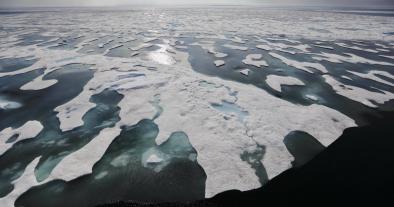Headline
November Was A Bad Month For Arctic Sea Ice. The Overall Picture Is Much Worse.
Arctic

The Arctic ― and, for completely unrelated reasons, the Antarctic ― just closed out November with less ice than any other year in history.
But the real cause for alarm isn’t last month’s warming blip in the Arctic that temporarily stalled ice growth, an anomaly that happens from time to time. Nor is it the concurrent loss of ice in the Antarctic ― since, to the best of our knowledge, the behavior of sea ice in one hemisphere has nothing to do with the behavior of sea ice in the other.
The scariest part of all this is the long-term warming trend it follows.
“The 10 lowest years [of Arctic sea ice] have all occurred in the last 10 years,” said Julienne Stroeve, a senior research scientist at the National Snow and Ice Data Center.
Related Content
Science Source
| World Weather Attribution
Unusually high temperatures at the North Pole, winter 2016
Science Source
| Geophysical Research Letters
Accelerated increase in the Arctic tropospheric warming events surpassing stratospheric warming events during winter
S.‐Y. Simon Wang, Yen‐Heng Lin, Ming‐Ying Lee et al
Science Source
| Bulletin of the American Meteorological Society
EEE 2016: CMIP5 Model-based Assessment of Anthropogenic Influence on Highly Anomalous Arctic Warmth During November–December 2016
Jonghun Kam, Thomas R. Knutson, Fanrong Zeng et al
Headline

Dec 12, 2017 | Mother Jones
The Arctic is warming faster than at any point in the past 1,500 years


